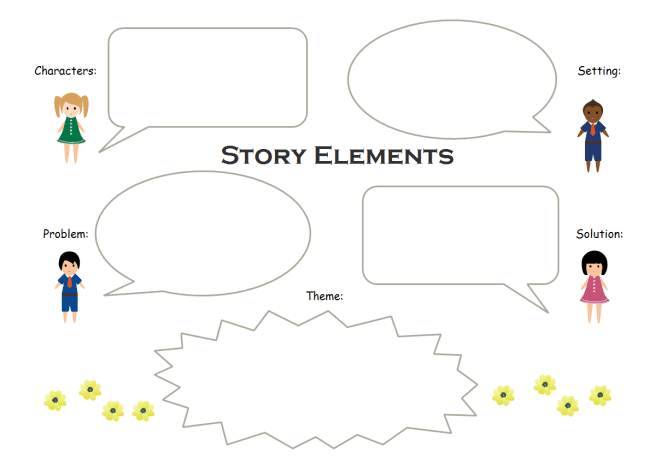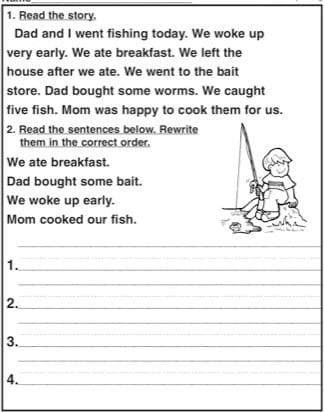What Is a Theory in Elementary Reading

The Schema Theory
Schema theory is an caption of how readers use prior knowledge to comprehend and learn from text (Rumelhart, 1980). The term "schema" was first used in psychology past Barlett as "an active organization of past reactions or experiences" (1932,p.201), later schema was introduced in reading past Rumelhalt (1980), Carrell (1981) and Hudson (1982) when discussing the important role of groundwork knowledge in reading comprehension (all cited in An, 2013). The cardinal principle of the schema theory assumes that written text does not bear meaning by itself. Rather, a text simply provides directions for readers as to how they should retrieve or construct meaning from their own previously acquired knowledge (An, 2013).
According to schema theory, comprehending a text is an interactive process between the reader'due south background cognition and the text. Efficient comprehension requires the power to chronicle the textual fabric to i's own noesis. Every bit Anderson (1977, p.369) indicate out, "every human activity of comprehension involves one'due south cognition of the world as well". Reading comprehension operates in two directions, from lesser up to the top and from the top downwards to the bottom of the hierarchy. Bottom-up processing is activated past specific information from the text, while top-down processing starts with full general to confirm these predictions. These 2 kinds of processing are occurring simultaneously and interactively, which adds to the concept of interaction or comprehension betwixt bottom-upwards and tiptop-down processes (Carrel and Eiserhold, 1983. Cited in An, 2013).
The 3 Levels of Comprehension
Reading comprehension is the ability to process information that we take read and to sympathise its meaning. The three levels of comprehension are the literal level, inferential level and the critical/evaluative level.
- The Literal Level: It is simply what the text says and what really happens in the story. This is a very important level of understanding because it provides the foundation for more advanced comprehension. It focuses on reading the passages, hearing the words or viewing the images. It involves identifying the important and essential data. With guidance, students can distinguish between the important and less important ideas.
- The Inferential Level: It involves determining what the text means. Determining inferential meaning requires yous to recall about the text and draw a conclusion. , the focus shifts to reading between the lines, looking at what is implied by the fabric under study. It requires students to combine pieces of data in order to make inferences about the author's intent and message. Guiding students to recognize these perceived relationships promotes understanding and decreases the take a chance of beingness overwhelmed by the complexities of the text being view, heard or read.
- The Disquisitional Level: In this level nosotros are analyzing or synthesizing information and applying it to other information. Understandings at the literal and interpretive levels are combined, reorganized and restructured at the critical level to express opinions, draw new insights and develop fresh ideas. Guiding students through the applied level shows them how to synthesize information, to read between the lines and to develop a deeper understanding of the concepts, principles, and implications presented in the text.
For Instance: The Story of The Piped Piper
Long ago, far away in the country, the people of a modest town had an infestation of rats. The people of the town could non handle the rats any longer so they urged their mayor to do something about the infestation. In word with his men, the mayor had a visitor at the door. It was a strange looking man with a pipe who said that said he was the Piped Piper and he can get rid of the rats for the boondocks. His terms were that the mayor pays him one hundred dollars ($100) if he does. The mayor wanted to pay him five hundred dollars ($500) but the piper was satisfied with the $100. The piper blew his pipe and the rats followed him out of the town. The town'due south people no longer had a rat problem. The mayor then refused to pay the piper so he played his pipe over again and this time, took the town's children; never for their parents to see them once again.
Questions for Each Level of Comprehension
- What problem where the people of the town facing? (Literal)
- Why were the women, children and babies crying? (Inferential)
- What would you if rats infested your dwelling house? (Critical)
- Draw the man that was standing at the door when the mayor opened information technology. (Literal)
- Why did the rats run later the Piped Piper? (Inferential)
- How would you have reacted if you were the Piped Piper and the mayor refused to pay yous later on your work? (Critical)
Comprehension Skills
- Sequencing: Sequencing refers to the identification of the components of a story, such every bit the beginning, centre, and end, and also to the ability to retell the events within a given text in the social club in which they occurred. The ability to sequence events in a text is a key comprehension strategy, peculiarly for narrative texts.
- Graphic Organizer: A graphic organizer, also known as knowledge map, concept map, story map, cognitive organizer, advance organizer, or concept diagram, is a communication tool that uses visual symbols to express knowledge, concepts, thoughts, or ideas, and the relationships between them. With the use of a graphic organizer, the children should be given an action where they are required to land the before, during and after occurrences with Piped Piper in the story. They should call up the principal points of what happened earlier the Piped Piper, what was happening while the Piped Piper was in the boondocks and what happened after he left.
References
An, Due south. (2013). Schema Theory in Reading. Changchun University of Science & Technology, Changchun, China. University Publisher Manufactured in Finland.
Case of Comprehension Graphic Organizer

Example of Comprehension Sequencing

6 Questions | Fun Reading & Writing Comprehension Strategy For Kids
Ashley Richardson on July 08, 2020:
It is interesting because I have e'er thought of comprehension as a whole, and never in steps. I think the thought of moving through the steps with students is of import. First focusing on the literal levels earlier introducing the inferential levels is of import.
Cintia B. on July 07, 2020:
Read More From Wehavekids
Thanks for the article. It was very helpful to see the types of questions to ask at each of the unlike levels.
T.Forest on June 13, 2020:
Nifty read! Equally a Kindergarten teacher a goal of mine is to build schema. I particularly loved learning about the 3 levels of comprehension. Having background noesis that the readers bring to the story allows them to get a complete picture show of what is happening.
Lora O'Neill on June 09, 2020:
Great data here! Groundwork knowledge (or schema) is vital for reading comprehension. Every bit a instructor of grade one students, one of my biggest goals is to build schema. I find that the bigger the schema the more likely the kid is to connect to what they are reading or what is existence read to them. I also like how the author summarized the three levels of comprehension (literal, inferential and critical). Thank you for that!
C. Bodnarchuk on May 25, 2020:
It is so of import to ensure as educators we are request our students all three levels of questions, and not just the literal and inferential.
Shelagh Gay on May 19, 2020:
Equally a teacher, I tin can use the unlike ways of comprehending text, literal, inferential and critical, for really focused cess on their comprehension skills. Understanding what cognition they bring to the text via their schema, would also assist to evaluate their comprehension
S.M. on Feb 04, 2020:
I think that the background knowledge the readers bring to the story allows them to get a complete motion picture of what is happening in the story and not just the words that they are reading or the visuals that they are seeing.
Areola Titilayo on December 10, 2019:
Thank you for the mail! I need explanation on the types of schemata peculiarly textual schemata.
T.D. on July 04, 2019:
I agree with the schema theory idea of the text not having meaning on its ain. Information technology is and then shaped by the reader that meaning is created from what they do with the text and their experiences. I appreciate yous putting into a articulate format the three different levels of comprehension and for sharing the comprehension skills and resources! Give thanks you!
muhammad ilyas on March 10, 2019:
Educatee
Natalie on October 12, 2018:
I very much concur with this theory. I think students think that the words in the book or on the page are going to magically produce meaning for them when really information technology is their past experiences and knowledge which will unlock that significant and deeper comprehension. Great strategies and questions that demonstrate that shift between the iii levels.
Helena on July 04, 2018:
I absolutely love the questions for each level of comprehension! They provide a distinct difference betwixt literal, inferential, and critical tiers. I run across a lot of these same types of questions in Fountas and Pinnell'south guide.
As far as the use of graphic organizers, I've seen some reluctance in my junior students who would prefer to communicate their understandings orally as opposed to a written format.
Nicole on Apr 21, 2018:
I accept some ELL students in my class this year. While they can decode words well they struggle to recollect what has happened in the stories we are reading. We have been using these kinds of graphic organizers to aid them hold onto what we read. Thanks for confirming that we are on the right runway.
Marlene on April 21, 2018:
I believe it is so important to guide students as they move from the literal level to the inferential level, and go them to the critical level. Most are good at the literal level but it gets much more difficult to become through the inferential level. This is where teachers need to provide rich comprehension activities that push students past making inferences to beingness able to analyze, synthesize and apply.
Source: https://wehavekids.com/education/Reading-Comprehension-Theory
0 Response to "What Is a Theory in Elementary Reading"
Post a Comment